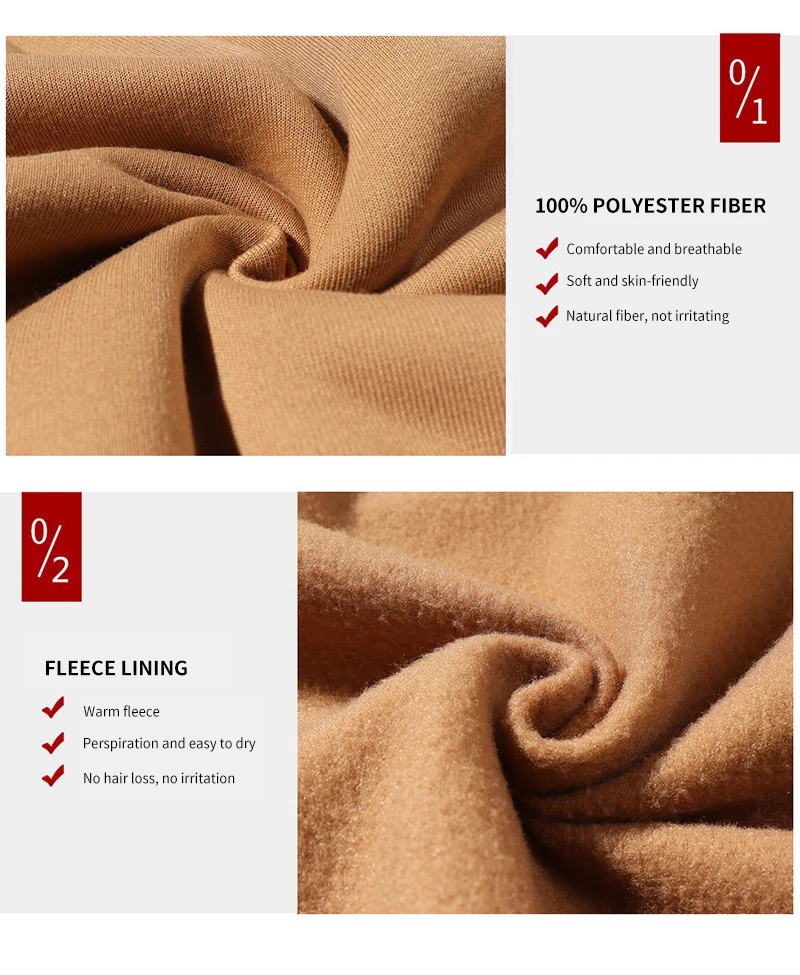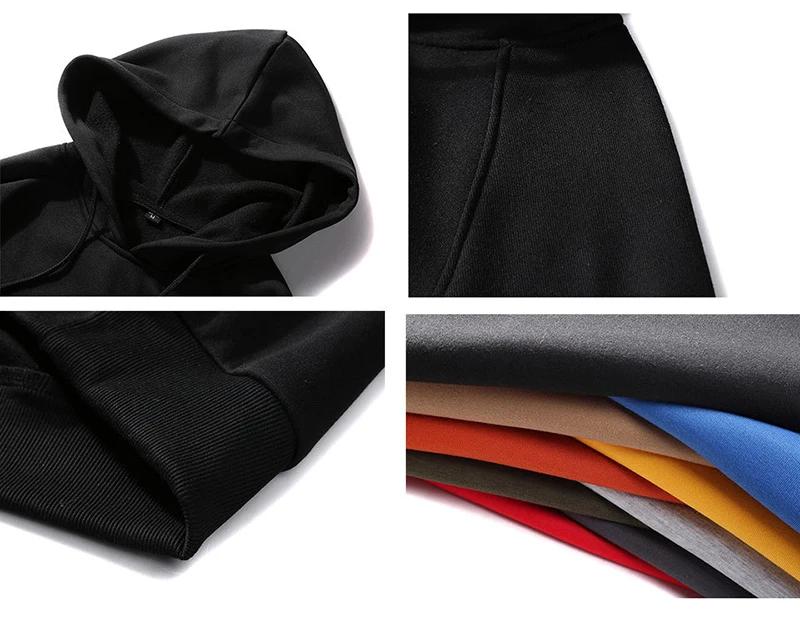This kind
of jacket, the shell
fabric is made of fabric in polyester/cotton . It's very soft ,comfortable and breathable , because of this reason, people always put on it for the outdoor in the spare time. There are many styles for your
choice . Any color , any size, any styles, we can do it. when
you want to have a sport , you can wear it separately and fit very well, very
comfortable. we trust you will like it. if you are
interested in this kind of garments, please don't hesitate to contact to us ,
any color, any style, any
size,we can do it.
French Terry Hoody,Furry Fleece Hoody,T/C French Terry Hoody,T/C French Terry Jacket Jinan Topline Trading Co., Ltd. , https://www.jinantopline.com




Tibetan clothing culture has a greater development. When "Zhongdian Dingwang" (equivalent to the mid-Western Han Dynasty), Tubo in the southern Yalong River valley began to smelt iron, copper, silver and other minerals, creating the conditions for the appearance of metal ornaments. Tibetan history records, in the third century AD La Tuotuo years praise, Tubo Zapp clothing has been different, there was a difference in dress level. History of Songtsan Gambu period, the history of Tubo opened a new page, Tubo culture developed rapidly, and its clothing culture is increasingly developed. Tubo slavery dynastic hierarchy, the performance of clothing is also getting better. As can be seen from Dunhuang frescoes, which reflect the climax of the Tuboons, the troughs of the three kingdoms, which are generally used only by Zambo, are holed, with reddish troughs, usually higher than that of the average person Hat; Tibetan king's attendants or subordinates often wear flat top no hat. Gowns are also different styles, the official chapter of the chapter regulations require a second, second class gold, third class gold silver, silver and other fifth class, fifth class copper, iron and other six sizes, a total of twelve, installed in Three-inch box hanging in the chest to distinguish the level of jobs. The generals' helmets are tangible, such as the decoration of towers. There are three colored flags on the helmets of helmets to indicate the year of birth. With the development of the Tubo smelting industry, which is "only based on tempering," the armor of the armed forces is becoming increasingly sophisticated. Dew two orbital, bow sharp edge often can not be broken, its majestic, brave gas in today's Jokhang Temple fresco of Tibetan warriors still vivid. The Tubo aristocrats not only dressed themselves luxuriously, but also decorated their maids when they were parties and feasts. And as Zampu Songtsan Gambu is a red band Baotou, wearing a robe, enough to wear boots pointing to the toe, according to "Red History" contains set, this dress is influenced by the Persian dynasty, reflects the culture Contact has affected the cultural level of apparel, but from the beginning of Songtsan Gopbo's close contacts with the Central Plains, the long-term contact of two ethnic cultures more for the development of Tibetan costumes into the fresh blood. Shi Wencheng into the possession of the princess, brought a variety of flowers satin, Kam, Ling Lo and all kinds of clothing 20,000, there are a lot of jade apparatus. Songtsan Ganbu and Tibetan Tubo minister have removed their own felt fur Qiu, Chuan serpents. Modern high-ranking officials in Tibet, hair boil into a bun, wearing a gold-white hat, which is the Tang Dynasty Jinshi clothing. In addition, Adoption of Princess Wencheng proposal, so that people forbid "ocher noodles" (painted with oil), Princess Wencheng also brought into Tibet, silkworm mills and textile technology, "planting mulberry silk Xi" greatly promoted the Tibetan costumes and skills The development of a large number of Tibetan costumes and artifacts unearthed in Dulan, Haixi Prefecture, Qinghai Province, truly and vividly reflected the craftsmanship of Tibetan costumes. Mostly apparel fabric patterns Lianzhu animal models, ornaments of gold jewelry, exquisite decoration makes breathtaking. Today Tibetan women's jewelry inlaid shape, you can find prototypes from these artifacts. Stein's book, "Ancient Central Asian Cultural Relics," also mentions: "Among the relics found in Tubo, there are many silk fabrics with patterns, some of them printed, some of them woven, and the changes of pattern images This is a very good indication of the commercial status of Tubo, ... probably the trade focus between China and West Asia. "Frequent exchanges have promoted the economic development of Tubo and promoted the development of apparel culture. As a military empire, Tibet has conquered many other ethnic groups in the Qinghai-Tibet Plateau and its peripheral areas during its development. This is an important reason for the cultural differences among Tibetans in various regions today. The same is true in the performance of clothing. This difference in the Tubo period mainly manifested as the difference of the tribal costumes of the eastern women, the attached country, and the party items. The eastern women tribe lived in the Kangyanchuan (now Changtu) and lived in the social development stage of the matriarchal clan. The queen wore the Qing Mao Ling (æ°† æ°‡) On the Phi robes, Sleeve to the ground, winter wear Wen Jin decorated lamb fur. Epilepsy 鬟 bun-like, both ears hanging ç° (earrings). Full wear leather (leather boots). General men hair, women identified hair, men and women are painted with color. Wang died in mourning for three years, not easy to wear, do not clean. Attaching the country is now the center of Ganzi in Sichuan Province, including the Tibet-Qiang fusion body of Jiarong Tibetans in Aba, Sichuan. They wore round leather hats, or curtains away from good (ie, a type of mask, for women). Wool covered with hair (æ°† æ°‡ a class), fur, wearing leather shoes. Neck Tie, hand-held iron é’. King and chiefs to gold as jewelry, hung three inches long gold flower chest. Party items are purely nomadic tribes, "serving felicitations, felts felt decorative", as early as the Northern Zhou Dynasty has been able to create exquisite rhinoceros, iron armor. In the northwestern part of Sichuan, there are also Tangzhi, Wu Xingguo and Dangchang, who belong to the party tribal coalition. The costumes and customs are the headbands, the robes, the small pants, the leather boots, and the Tibetan costumes in Sichuan pastoral areas similar. In addition, there Tuyuhun Qinghai region, the ladies Phi Kam robes, Daikin Corolla. Such as hairstyle for the hair after the hair, decorated with beads, with many noble, this costume and Qinghai Tibetan women roughly the same. The characteristics of these areas are the mother of different Tibetan costumes around the world today. After the collapse of the Tubo Dynasty, Tibetan society has been in a state of chaos splittism for more than 200 years from the mid-ninth century to the eleventh century. This period of war chaos, clothing art development will inevitably doom, stagnation, war-related warrior costumes but economic development. In the ruins of the Ali Gurion Kingdom in Tibet, armor and weapons are available that have plenty of ancient warriors. The armor is mostly steel sheet A, is made of thin strips of string steel, stringing method is quite complex, the shield in the weapons, the Department of rattan woven round, diameter 80 cm, the front is set with copper There are four copper rings on the back, which can be connected with leather straps for grip purposes. Regardless of these costumes and weapons, it is a local production of Tibet, Or inflows, all indicate that at that time the warrior costumes in Tibet had distinct local characteristics and personalities. Another characteristic of the rise of Buddhist monks clothing during this period is the rise of Buddhist monks clothing. In the eighth century AD, the first monks appeared in Tibet. Clothing was supplied by the Zapu government treasury and later by the common people and the government. Buddhist costumes also form a hierarchy of differences, and festivals and usually different costumes, self-contained system. Many upper-class monks live a luxuriant life with gorgeous clothes, "sit under the weight of Yin, Zhang umbrella cover, dress damask ... ...". Early Tibet monks costumes are greatly affected by India. It is said that Bei Xiamao was first handed down by the Indian King to the lotus of Nyingma king, and became one of the Tibetan monk's hats. However, Tibetan monk clothing evolved rapidly and became very local in color. More than 200 years after Lang Dama killed Buddhism, Buddhism re-emerged and many factions formed. The factions differ not only in the interpretation of Buddhist scriptures, but also in dress. The ancient Nyingma monks with red coyotes, it is also known as the Red Cross. The Kagyu group, however, used red-hats or black hats to show the differences between the tribes. This phenomenon of apparel identity and belief is one of the important functions of Tibetan apparel culture. It is also a distinctive feature in the history of Tibetan apparel. During the Yuan Dynasty and the twentieth century, Tibet belonged to the Central dynasty. Therefore, it has had close contact with the Yuan dynasty in all aspects of culture, and its influence on apparel has also been greater than that of the previous dynasty. Yuan Dynasty in Tibet to appease, negotiate, 10,000 and other officials at all levels, different grades of Tibetan robes wearing different floral ornaments, wearing different top crowns, and even before the democratic reform of the government of Gagsha, a official service name Also retains the Yuan Dynasty called "Zhazhaer Erbaima" (Tibetan means lotus-style Mongolian gown). The main mark of the official product is also shown in the Mongolian "jiangda" (ie, the crown) on the top of the difference. Officials aristocratic housekeeper, followers, maids have some form of hat, housekeeper at ceremony ceremonies to wear "Soxia" (that is flat-top Wai Wai Mongolia cap) and so on. There is also a aristocrat usually wear the "summer wood package and more" cake-shaped cap, housekeeper or root cloth (township officials) are often worn during this period Sakya upper officials, aristocratic costumes or follow the Mongolian aristocracy, or directly for the yuan Dynasty gift, wear is very common. Pastoral areas in northern Tibet have more contacts with Mongolian ethnic groups and still maintain certain Mongolian dress customs. Another characteristic of the Yuan dynasty Tibetan costume is the influence of religious beliefs on costumes. With the rejuvenation of Buddhism, strict hierarchy of monks formed, making religious culture permeate clothing, shoes and hats in various forms and means, and expressed a specific meaning in specific patterns or symbols. This phenomenon also affects folk costumes, such as Tibetan gowns with imitation shades and ornaments bearing religious symbols and Buddhist magic. In the Ming Dynasty, the ties between the Central Government and Tibet were further strengthened. Under the command of the Ming Dynasty, the Uzbek Tibetan Bank commanded the Division and Duo Gan to command the envoys to administer Tibet to Gansu, Qinghai and Tibetans in the western part of Sichuan Province. Often they were given a large amount of precious silk, . From the tribute tribute to the items in the view, æ°† æ°‡, Mao Ying, Zha Ma, iron linen and other textile products account for most of the tribute. This shows that the textile industry in Tibet was also greatly developed. The textile industry is the basis for the development of apparel. Another good condition for the development of the Tibetan apparel industry in the Ming Dynasty was the massive trade of horse and horse between the Central Plains and the official Tibetan people. Large quantities of cloth, satin silk and finished textile products were imported into Tibet. These trade were hard to be matched by any previous era. In addition, the Tibetan opera in the Ming Dynasty had a great development, and the art of apparel, which is inseparable from the art of Tibetan opera, naturally rose rapidly. In addition to the historical costumes of aristocrats daily costumes, but also developed a different kind of highly exaggerated costumes and a large number of masks. And these costumes and masks are strictly in accordance with the role of theatrical identity status configuration, and to serve their personality traits. Such apparel gorgeous, exaggerated, focusing on expressive and strong decorative effect, the successful Tibetan costumes after the art deal to the drama stage, adding to the Tibetan clothing culture of new blood. At the same time, it has greatly promoted the development of the arts such as drama, dance and art in Tibet. The Qing Dynasty was an unifying multiethnic country in Chinese history. During this period, most of the nationalities in China got tremendous development and became more and more stereotyped. Closely linked with today. Tibetan clothing culture is no exception, so we will take the Qing Tibetan clothing culture as the mainstay, to explore further the structure, artistic features, aesthetic features and production techniques of Tibetan costume culture in order to deepen the Tibetan clothing culture.